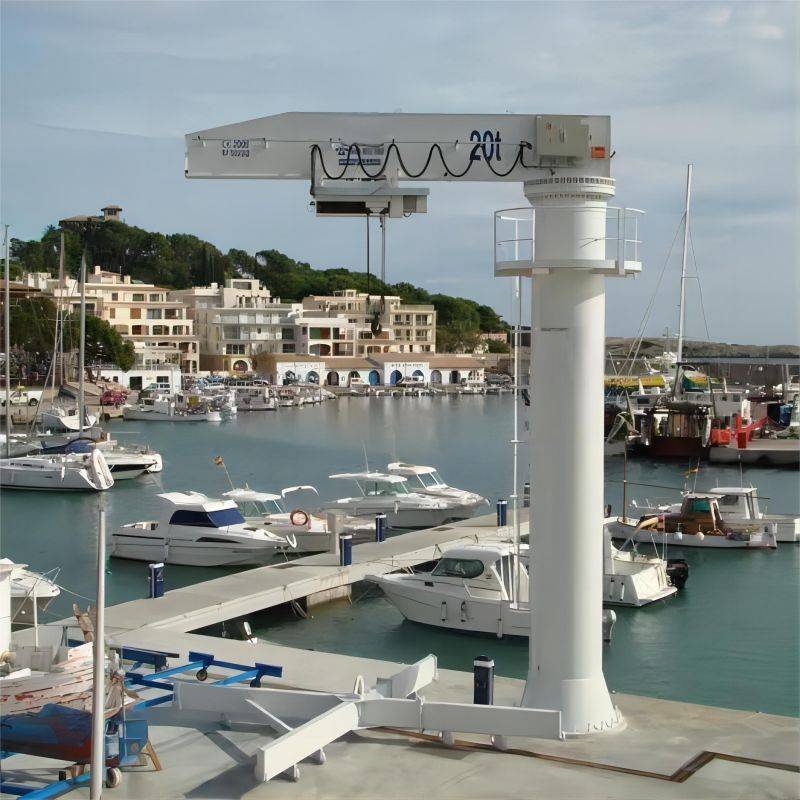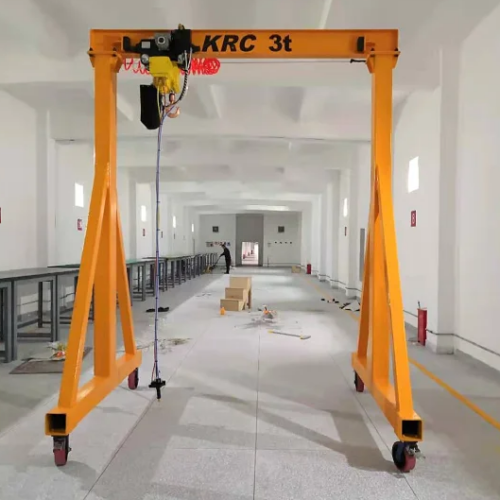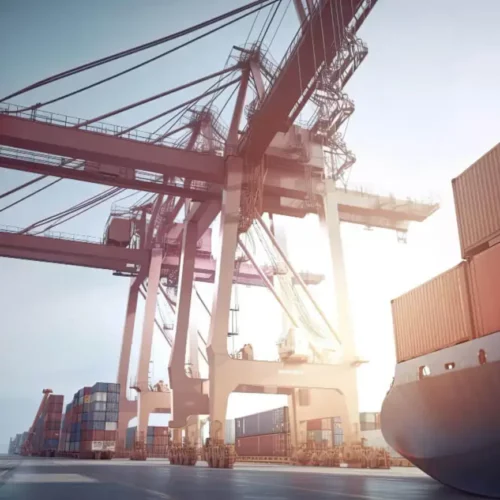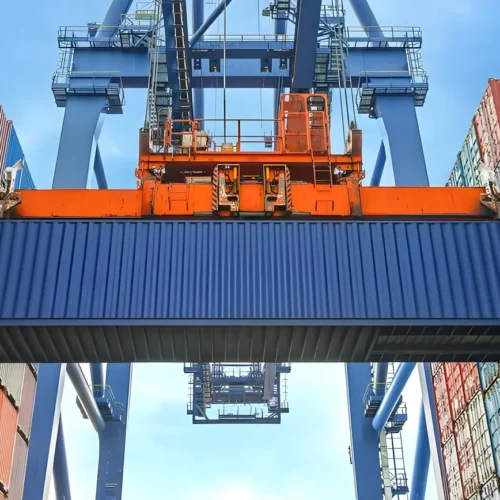shipyard gantry crane Safety Certifications
Safety certifications for shipyard gantry cranes are crucial to ensure safe and efficient operations in shipbuilding and repair facilities. These certifications typically involve compliance with global and regional standards, focusing on various aspects such as design, manufacturing, installation, and operation. Below are some key safety certifications and standards involved:
1. ISO 9001 and ISO 14001: These certifications focus on quality management and environmental management systems, ensuring that the gantry cranes are manufactured under stringent quality controls and with minimal environmental impact.
2. OSHA (Occupational Safety and Health Administration): In the United States, OSHA provides standards specifically tailored to crane operations, ensuring safe working conditions and practices. Compliance with OSHA standards is mandatory for operational approvals.
3. EN 15011: This is a European standard specifically for bridge and gantry cranes, detailing the safety requirements and verification methods. Compliance ensures that the crane design and manufacturing meet stringent European safety criteria.
4. ASME B30.2 and B30.17: These standards provided by the American Society of Mechanical Engineers define the safety requirements for overhead and gantry cranes. Adherence to these standards ensures safe design, construction, installation, and operation.
5. CE Marking: For cranes used in the European Union, CE marking is mandatory. It indicates that the equipment complies with EU safety, health, and environmental protection standards.
6. FEM (Fédération Européenne de la Manutention) standards: These guidelines are often referred to for design and ergonomic considerations, enhancing both safety and operational efficiency.
7. CMAA (Crane Manufacturers Association of America): Provides specifications that ensure the safe construction, installation, and use of cranes, including shipyard gantry cranes.
Compliance with these certifications and standards is not just about meeting legal requirements; it also ensures safer working conditions, reducing the risk of accidents and enhancing overall operational efficiency. Regular inspections and maintenance, along with employee training, are essential components of maintaining these safety certifications.
List Reference Technical Parameters of “shipyard gantry crane”
A shipyard gantry crane is an essential piece of equipment in shipbuilding and heavy load lifting operations. Understanding its technical parameters is crucial for ensuring safe and efficient operations.
Key Technical Parameters of Shipyard Gantry Crane:
1. Load Capacity:
– Range: Typically from 50 tons to over 1,500 tons.
– Impact: Determines the maximum weight the crane can safely lift and maneuver.
2. Span:
– Range: Generally between 20 to 160 meters.
– Usage: The span dictates the horizontal distance the crane can cover.
3. Lifting Height:
– Range: Varies between 10 to 70 meters or more.
– Application: Defines the vertical distance the crane can lift a load.
4. Work Duty:
– Classification: Varies from A3 to A7 (according to FEM standards).
– Explanation: Determines the frequency and intensity of crane usage.
5. Speed Parameters:
– Hoisting Speed: Often between 5 to 15 meters per minute.
– Trolley Speed: Typically ranges from 20 to 60 meters per minute.
– Gantry Travel Speed: Usually between 30 to 120 meters per minute.
– Consideration: Speed affects operational efficiency and safety.
6. Control System:
– Types: Manual, semi-automatic, or fully automated.
– Relevance: Influences operational precision and ease of use.
7. Power Source:
– Electrical: Typically 380V/50Hz or customized.
– Efficiency: Directly impacts operational costs and environmental footprint.
8. Safety Mechanisms:
– Components: Overload protection, limit switches, emergency stop functions.
– Importance: Critical for preventing accidents and ensuring reliable operation.
9. Environmental Adaptability:
– Operational Range: Temperature tolerance, wind resistance, and corrosion protection.
– Adaptation: Ensures the crane functions optimally in diverse environmental conditions.
10. Mobility:
– Fixed vs. Mobile: Fixed cranes are anchored, while mobile ones can be moved along tracks.
– Utility: Mobility enhances flexibility for various shipyard tasks.
In sum, these parameters define the operational capabilities and limitations of shipyard gantry cranes, ensuring they meet specific project requirements while maintaining safety and efficiency standards.
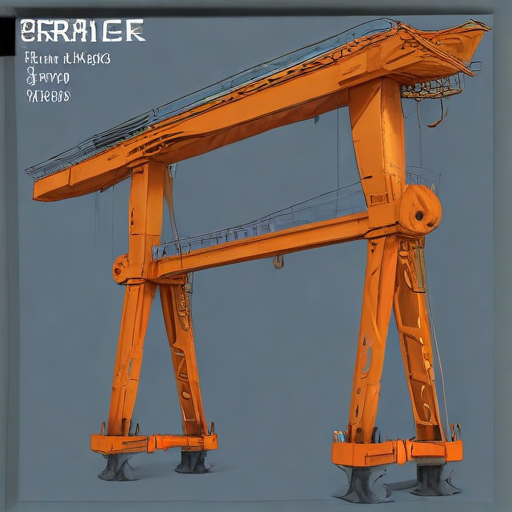
List Product features of “shipyard gantry crane”
Sure, here are the key product features of a shipyard gantry crane:
1. Heavy Load Capacity: Designed to handle loads ranging from tens to hundreds of tons, accommodating heavy-duty lifting requirements.
2. Durable Construction: Built with high-strength steel and corrosion-resistant materials to withstand harsh marine environments and prolonged usage.
3. Adjustable Span: Features a variable span to cater to different ship sizes and configurations, ensuring flexibility in operations.
4. High Precision Control: Equipped with advanced control systems for precise load handling, including anti-sway mechanisms and smooth acceleration/deceleration.
5. Height Adjustability: Adjustable height capabilities to meet various lifting needs and to operate efficiently over different structures and vessels.
6. Multiple Lifting Options: Various lifting mechanisms available such as hooks, spreader beams, or specialized grippers to handle diverse cargo types.
7. Safety Systems: Integrated with comprehensive safety features like overload protection, emergency stop buttons, limit switches, and failsafe braking systems to ensure secure operations.
8. Efficient Power Systems: Can be powered by electric motors or hydraulic systems, providing reliable performance and energy efficiency.
9. Weather Resistance: Designed to operate in all weather conditions, often equipped with weatherproofing to protect sensitive components.
10. Remote Control Option: Many models come with wireless remote control capabilities, allowing for safer and more flexible operation.
11. Automation Ready: Can be integrated with automation systems for enhanced productivity and reduced human intervention.
12. Maintenance Access: Easy to access components and simplified maintenance procedures to ensure minimal downtime and extend the equipment’s lifecycle.
13. Mobility: Depending on the model, some gantry cranes offer rail-mounted or rubber-tired options for enhanced mobility within the shipyard.
These features collectively make shipyard gantry cranes essential for efficient and safe operations in maritime environments.
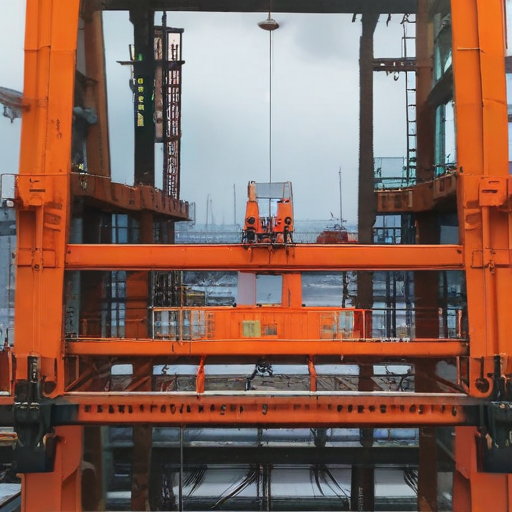
List Application of “shipyard gantry crane”
A shipyard gantry crane is a substantial, heavy-duty lifting mechanism primarily used in maritime environments to aid in the assembly, repair, and maintenance of ships and submarines. Here are key applications outlined concisely:
1. Ship Construction: The crane facilitates the lifting and positioning of large ship components like hull sections, engines, and superstructures, enabling efficient assembly of various parts.
2. Ship Repair and Maintenance: It assists in hoisting heavy parts that need repair or replacement, such as propellers, engines, and damaged hull sections, contributing significantly to the upkeep and longevity of maritime vessels.
3. Loading and Unloading Cargo: The crane manages the lifting of heavy, oversized cargo from trucks or trains onto ships and vice versa, playing a pivotal role in the logistics of shipping operations.
4. Material Handling: In shipyards, it lifts and transports construction materials like steel plates, girders, and other heavy items necessary for shipbuilding.
5. Submarine Operations: Specialized gantry cranes are used for the delicate task of lifting and positioning submarines, both during construction and for maintenance.
6. Module Assembly: For modular construction, where ship sections are built separately and then joined, the crane hoists and aligns these modules accurately.
7. Launching and Docking: It aids in the launch of newly constructed vessels and in docking operations by lifting ships in and out of the water.
8. Heavy Equipment Transport: The crane is used to move heavy equipment and machinery around the shipyard, ensuring that essential components are where they need to be for various tasks.
These versatile applications highlight the shipyard gantry crane as an indispensable tool in maritime industries, enhancing efficiency, safety, and productivity.
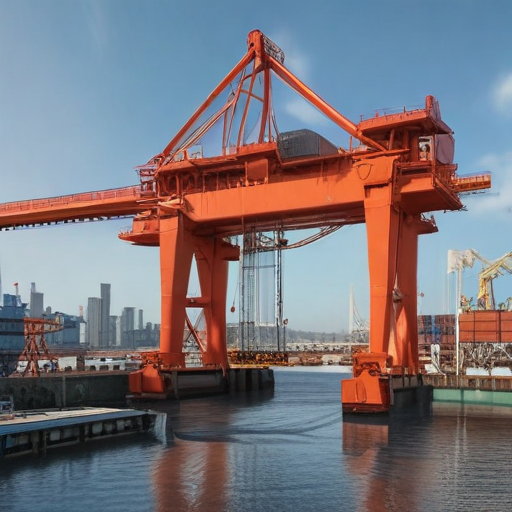
List Various Types of “shipyard gantry crane”
Shipyard gantry cranes are specialized types of cranes used primarily in shipbuilding and ship repair facilities. They are designed to handle heavy loads and facilitate different types of operations in shipyards. Here are various types:
1. Single Girder Gantry Crane:
– Features a single girder and is suitable for lighter loads.
– Cost-effective, with simpler design and easier maintenance.
2. Double Girder Gantry Crane:
– Equipped with two girders, providing increased strength and stability.
– Can handle heavier loads and larger spans compared to single girder types.
3. Full Gantry Crane:
– The entire structure spans the width of the workspace, with legs at both ends.
– Typically used for heavy lifting and can cover large areas.
4. Semi-Gantry Crane:
– One side of the crane is supported by legs that move on rails, while the other side runs on a rail attached to a building.
– Ideal for spaces with constraints on one side.
5. Portable Gantry Crane:
– Smaller and can be moved around as needed.
– Ideal for smaller ship components and repair tasks.
6. Rail-Mounted Gantry Crane (RMG):
– Moves on a fixed rail system and is typically used for container handling in shipyards.
– Offers high precision and efficiency.
7. Rubber-Tired Gantry Crane (RTG):
– Equipped with rubber tires, offering more flexibility in movement.
– Useful for tasks requiring mobility within the shipyard.
8. Goliath Gantry Crane:
– Extremely large, heavy-duty cranes used for lifting extremely heavy and large ship sections.
– Known for their tall stature and immense lifting capability.
Each type of gantry crane is selected based on specific operational needs, load capacities, and spatial constraints within the shipyard.
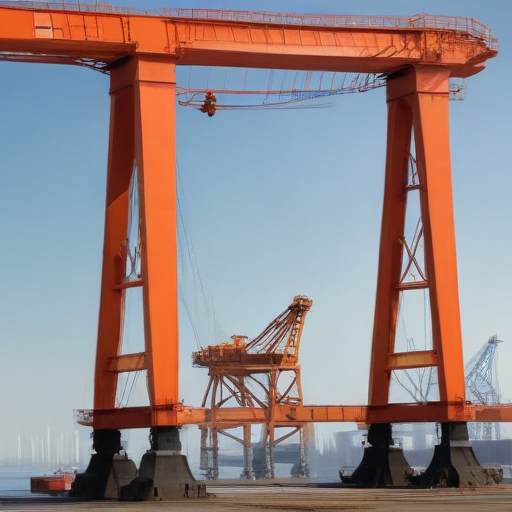
shipyard gantry crane Accessories Upgrades and Custom Manufacturing Options
Shipyard gantry cranes are crucial for efficient and safe operations in maritime environments. Upgrading and customizing these cranes can significantly enhance their performance and adaptability. Here are some key accessories, upgrades, and custom manufacturing options:
1. Lifting Gear Options:
* Spreaders and Lifting Beams: Customized designs for handling various cargo types.
* Hooks and Grabs: Heavy-duty options for different materials like containers, bulk cargo, and machinery.
2. Automation and Control Systems:
* Remote Control Operations: Upgrading to wireless remote controls for improved safety and precision.
* Automated Positioning Systems: For accurate alignment and enhanced efficiency.
3. Safety Enhancements:
* Anti-Sway Systems: Reducing load sway to increase safety and speed.
* Collision Avoidance Sensors: To prevent accidents with other equipment or infrastructure.
* Load Monitoring Systems: Real-time weight measurements to avoid overloading.
4. Structural Customizations:
* Adjustable Height and Span: To handle different vessel sizes and dock configurations.
* Weather Protection: Wind resistance modifications and corrosion-resistant materials for better durability.
5. Efficiency Improvements:
* Energy-Efficient Drive Systems: Variable frequency drives (VFDs) for reduced energy consumption.
* High-Speed Hoisting Mechanisms: Faster operation speeds tailored to workload requirements.
6. Maintenance & Service Access:
* Easy-Access Platforms: For routine inspections and maintenance tasks.
* Lubrication Systems: Automated greasing systems for reduced wear and tear.
7. Environmental Considerations:
* Noise Reduction Kits: To minimize operational noise, crucial for urban shipyards.
* Eco-Friendly Hydraulic Fluids: Biodegradable options to reduce environmental impact.
By incorporating these accessories and upgrades, shipyard gantry cranes can be tailored to meet specific operational needs, improving overall productivity, safety, and longevity. Custom manufacturing options ensure that the crane fits seamlessly into any unique shipyard layout and operational requirement.
List Quality Control and The Manufacturing Process of “shipyard gantry crane”
Quality Control of Shipyard Gantry Crane
1. Material Inspection: Raw materials undergo stringent checks for compliance with specifications, including strength, durability, and corrosion resistance.
2. Design Validation: CAD models and simulation software are used to verify structural integrity and load-bearing capacity.
3. Fabrication Checks: During manufacturing, consistent inspections are performed on welds, machining accuracy, and component assembly.
4. Load Testing: Cranes are subjected to load tests exceeding their maximum rated capacity to ensure safety margins.
5. NDT (Non-Destructive Testing): Ultrasonic, radiographic, and magnetic particle testing techniques are used to detect hidden flaws in crucial components.
6. Electrical Safety: All electrical systems are tested for insulation resistance, short circuits, and proper grounding.
7. Final Inspection: A comprehensive final check ensures all components function as intended, and the crane meets all regulatory standards.
Manufacturing Process of Shipyard Gantry Crane
1. Design and Order Confirmation: Detailed engineering designs are created, and customer specifications are reviewed for feasibility.
2. Materials Procurement: High-grade steel and other raw materials are sourced according to the design requirements.
3. Cutting and Forming: Steel plates and profiles are cut using laser or plasma cutters, then formed into required shapes through bending machines and presses.
4. Welding and Assembly: Components are welded together, often robotically, ensuring high precision. Major assemblies include the gantry structure, trolley, and hoist.
5. Machining: Machining of critical parts like wheels, pins, and gears ensures tight tolerances and smooth operation.
6. Surface Treatment: Components undergo sandblasting and are then coated with primer and paint to protect against corrosion.
7. Assembly: Final assembly integrates all major and minor components, including electrical systems, motors, and control panels.
8. Quality Testing: The assembled crane undergoes rigorous testing as part of quality control.
9. Installation and Commissioning: The crane is transported to the shipyard, installed, and thoroughly tested under real operational conditions to ensure safe and efficient performance.
Through diligent adherence to these quality control measures and a systematic manufacturing process, shipyard gantry cranes are produced to meet high standards of reliability and performance.
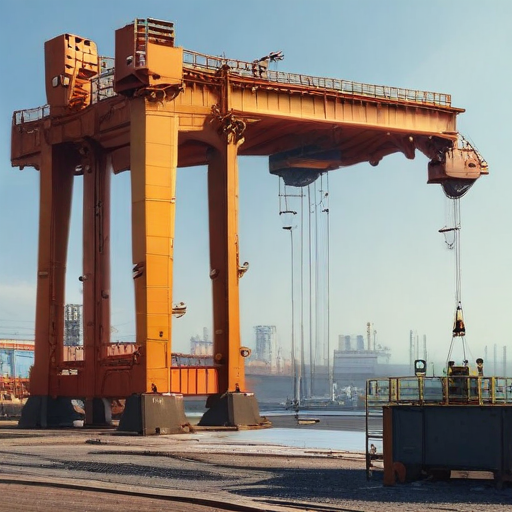
How to use “shipyard gantry crane”
A shipyard gantry crane is essential for heavy lifting and precise movements in shipbuilding and repair operations. Here’s a concise guide on how to use it:
1. Pre-Operation Checklist:
– Inspection: Ensure the crane’s structural integrity, check for any wear or damage.
– Safety Gear: Equip yourself and the crew with helmets, gloves, and safety shoes.
– Load Assessment: Understand the weight and dimensions of the load.
2. Setup:
– Positioning: Move the crane to the required location using the controls.
– Stabilization: Deploy the crane’s stabilizers or outriggers if necessary.
3. Lifting the Load:
– Attachment: Secure the load using appropriate rigging equipment such as slings or hooks.
– Balance: Ensure the load is balanced; use tag lines if needed to prevent swinging.
– Lifting: Gradually lift the load using the crane’s main hoist.
4. Movement:
– Horizontal Travel: Use the crane’s trolley and gantry motors to move the load horizontally.
– Monitoring: Continuously monitor the load for stability and alignment.
5. Placement:
– Lowering: Carefully lower the load to the designated area, monitoring its descent to mitigate any potential hazards.
– Detachment: Once placed, unhook the rigging equipment gently.
6. Post-Operation Checklist:
– Inspection: Re-check the crane for any signs of stress or damage after use.
– Securing: Park the crane in its designated area and secure all controls.
Safe Practices:
– Always follow the manufacturer’s guidelines.
– Never overload the crane beyond its rated capacity.
– Communicate clearly with your team using hand signals or radio communication.
By adhering to these steps and maintaining rigorous safety standards, you can effectively and safely utilize a shipyard gantry crane in various maritime operations.
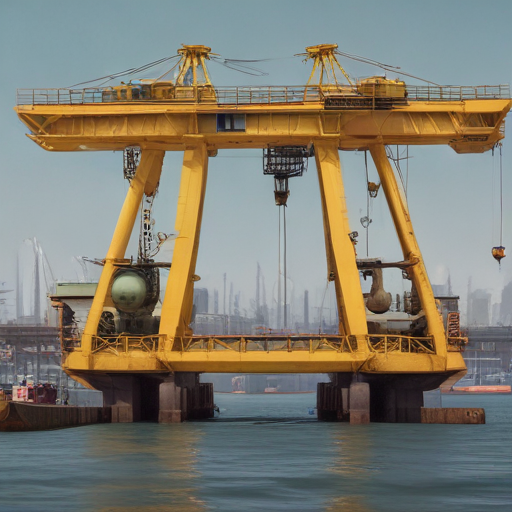
“shipyard gantry crane” Comparative Analysis
Comparative Analysis of Shipyard Gantry Cranes
Shipyard gantry cranes are indispensable in modern maritime and shipping industries, offering robust solutions for lifting and moving heavy ship components. This analysis compares the primary types: rail-mounted and rubber-tired gantry cranes.
#### 1. Construction and Mobility
– Rail-Mounted Gantry Cranes (RMG)
– Construction: Fixed on rails, offering higher stability.
– Mobility: Limited to rail tracks, these cranes are ideal for repetitive and high-precision tasks in a specific area.
– Rubber-Tired Gantry Cranes (RTG)
– Construction: Mounted on rubber tires, ensuring greater flexibility.
– Mobility: Can maneuver across a shipyard without being confined to tracks, supporting dynamic operational needs.
#### 2. Load Capacity and Height
– RMG
– Load Capacity: Typically supports higher loads, essential for massive shipbuilding and maintenance.
– Height: Varies widely but generally offers greater lifting heights due to the stable rail foundation.
– RTG
– Load Capacity: Usually lower than RMGs, but suitable for lighter, more frequent tasks.
– Height: Often lower, balancing flexibility and operational scope.
#### 3. Operational Efficiency
– RMG
– Efficiency: Excellent for high-throughput environments due to their stability and higher speed along fixed paths.
– Maintenance: Requires regular rail maintenance but offers low operational variability.
– RTG
– Efficiency: Best for diverse and mobile applications, but may face slower operations due to tire wear and mobility constraints.
– Maintenance: Higher demand for tire and mobility unit upkeep.
#### 4. Cost Implications
– RMG: Higher initial infrastructure costs due to rail installation and crane scale.
– RTG: More cost-effective for setups that require less initial infrastructure investment.
Conclusion
Selecting between RMG and RTG cranes hinges on the specific requirements of shipyard operations—whether prioritizing stability and load capacity (RMG) or mobility and flexibility (RTG). Understanding these distinctions ensures optimal investment and operational efficiency.
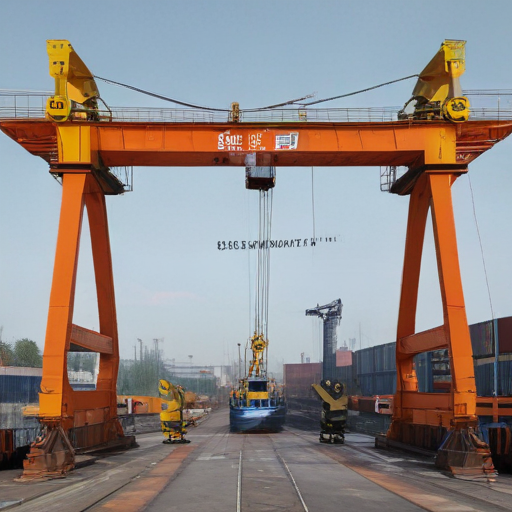
“shipyard gantry crane” Warranty and Support
Warranty and Support for Shipyard Gantry Crane
Our shipyard gantry cranes come with a comprehensive warranty and robust support to ensure maximum uptime and operational efficiency. Each crane is backed by a standard warranty period of 12 months from the date of installation or 18 months from the date of shipment, whichever comes first. This warranty covers any defects in materials or workmanship under normal use and service.
For the duration of the warranty, we offer free replacement parts for any components found to be defective, as well as free repair services. The warranty is void in cases of misuse, unauthorized modifications, or accidents that result in damage to the crane.
Support Services
We provide 24/7 customer support to address any issues or questions you may have. Our dedicated support team is equipped with in-depth technical knowledge to assist with troubleshooting, maintenance advice, and operational guidance.
On-site Services
We offer on-site inspection and maintenance services to ensure your gantry crane remains in peak operating condition. Scheduled maintenance and emergency repair services are available, ensuring minimal downtime in your operations.
Training and Documentation
Comprehensive training programs are available for your operational and maintenance staff, covering everything from basic operation to advanced troubleshooting techniques. Detailed manuals and video tutorials are also provided to facilitate easy understanding and efficient use of the crane.
Extended Warranty Options
For added peace of mind, we offer extended warranty plans that can be customized to suit your operational needs. These plans can extend coverage of parts and services for up to 5 years, ensuring long-term reliability.
Invest in our shipyard gantry crane and benefit from unparalleled support and a reliable warranty that safeguard your operations and maximize productivity.
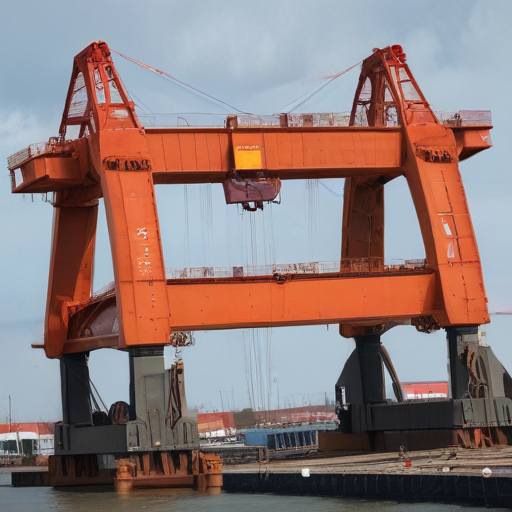
List “shipyard gantry crane” FAQ
Shipyard Gantry Crane FAQ
1. What is a shipyard gantry crane?
A shipyard gantry crane is a specialized type of crane used primarily in shipyards for the heavy lifting, transportation, and assembly of ship components. It features a high lifting capacity and can span large distances.
2. What are the main types of shipyard gantry cranes?
There are generally two types: single-beam and double-beam gantry cranes. Single-beam cranes are lighter and typically used for less demanding tasks, whereas double-beam cranes are robust and ideal for heavier and more complex lifting tasks.
3. What capacities do shipyard gantry cranes offer?
Shipyard gantry cranes come in various capacities, ranging from a few tons to over 1,000 tons, depending on the specific requirements of the shipyard.
4. What are the primary uses of shipyard gantry cranes?
They are used for lifting and transporting ship sections, assembling ship bodies, loading and unloading materials, and other heavy-duty tasks essential in shipbuilding and maintenance.
5. How do shipyard gantry cranes operate?
These cranes operate through electric motors and can be controlled via cabins, remote controls, or automated systems. They travel on tracks, allowing them to move heavy loads across vast areas.
6. What safety features are included in shipyard gantry cranes?
Safety features typically include overload protection, emergency stop systems, anti-collision devices, limit switches, and load sensors to ensure safe operation.
7. What are the maintenance requirements?
Regular maintenance involves checking the crane’s mechanical systems, electrical parts, and structural integrity. Lubrication of moving parts and inspection for any wear and tear are crucial to keep the crane in optimal working condition.
8. Are there any specific regulations for operating shipyard gantry cranes?
Yes, operators must comply with local, national, and international regulations such as OSHA (Occupational Safety and Health Administration) standards in the U.S. These regulations cover safe operation, regular inspections, and maintenance practices.
9. Can shipyard gantry cranes be customized?
Yes, many manufacturers offer customization options to meet specific operational needs, including custom lifting capacities, spans, heights, and additional features like automation or specialized hooks.
10. How long is the lifespan of a shipyard gantry crane?
With proper maintenance, a shipyard gantry crane can last between 20 to 30 years, although this can vary based on the intensity of use and environmental conditions.
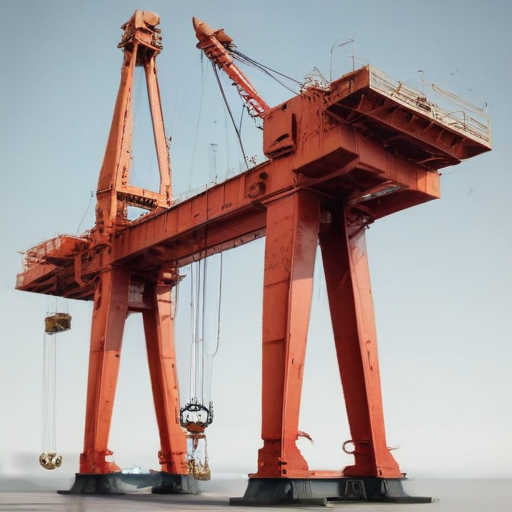
Top 10 FAQ with answer about shipyard gantry crane for Buyer Sourcing from China
1. What is a shipyard gantry crane?
A shipyard gantry crane is a specialized lifting device used in shipyards to handle heavy loads such as ship sections, engines, and other massive components. It’s characterized by its significant load capacity and the ability to traverse large areas of a shipyard.
2. What are the load capacities available?
Gantry cranes for shipyards are available in various load capacities, typically ranging from 5 tons to over 1,000 tons. The specific capacity required depends on the application’s needs and the heaviest loads expected.
3. What power supply options are there?
Shipyard gantry cranes usually operate on electricity. The common voltage used is 380V, 50Hz, but other configurations can be tailored to meet regional and operational requirements.
4. What are the key features to consider?
Key features include load capacity, span, lifting height, duty cycle, power supply, speed of hoisting/traveling, and safety mechanisms such as emergency brakes, overload protection, and anti-collision systems.
5. What certifications should the crane have?
Ensure the crane complies with international standards, such as ISO, CE, and other relevant certifications for safety and quality. Certification from classification societies like ABS, DNV-GL, or Lloyd’s Register may also be necessary.
6. How long is the lead time for delivery?
Lead times can vary based on customization and manufacturer production schedules. Typically, expect a period of 3 to 6 months from order confirmation to delivery.
7. Do manufacturers offer customization?
Yes, many manufacturers offer customization options concerning dimensions, load capacity, speed, and other performance parameters to meet specific operational needs.
8. What about after-sales service and support?
Good manufacturers provide comprehensive after-sales services, including installation supervision, operator training, regular maintenance, and 24/7 technical support.
9. What is the typical lifespan of a shipyard gantry crane?
With proper maintenance, a well-manufactured gantry crane can last 20-30 years, depending on usage intensity and environmental conditions.
10. Are spare parts readily available?
Reputable manufacturers offer spare parts and components availability for the crane’s entire lifespan and have an efficient supply chain to minimize downtime.
When sourcing from China, it’s essential to communicate your requirements clearly and select manufacturers with a solid track record and reputable certifications.

